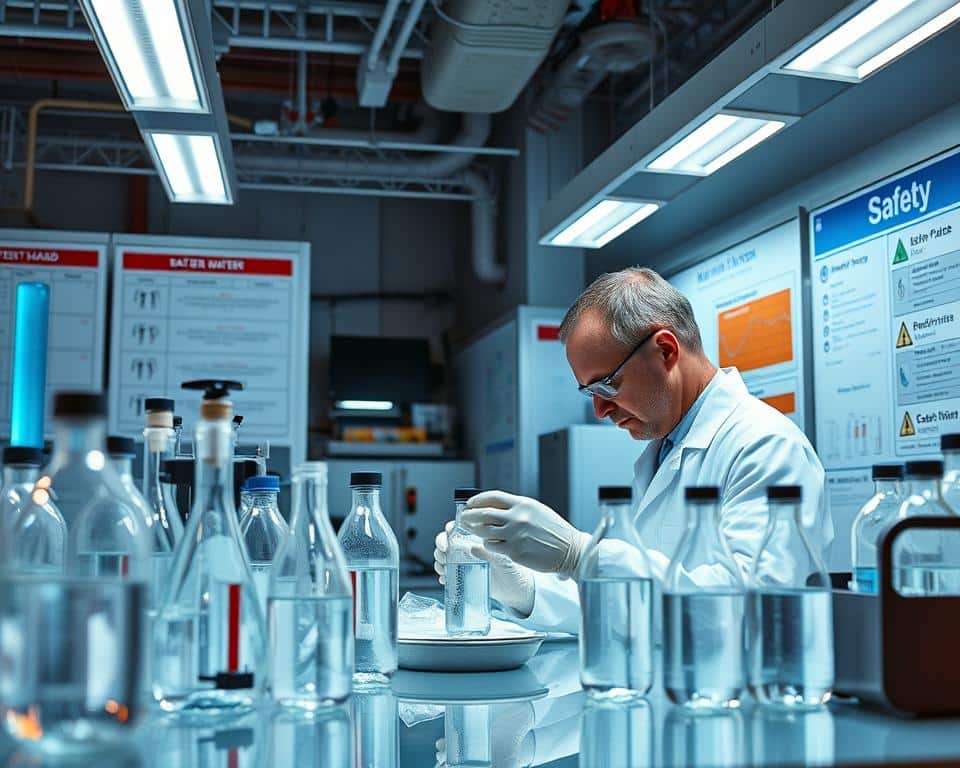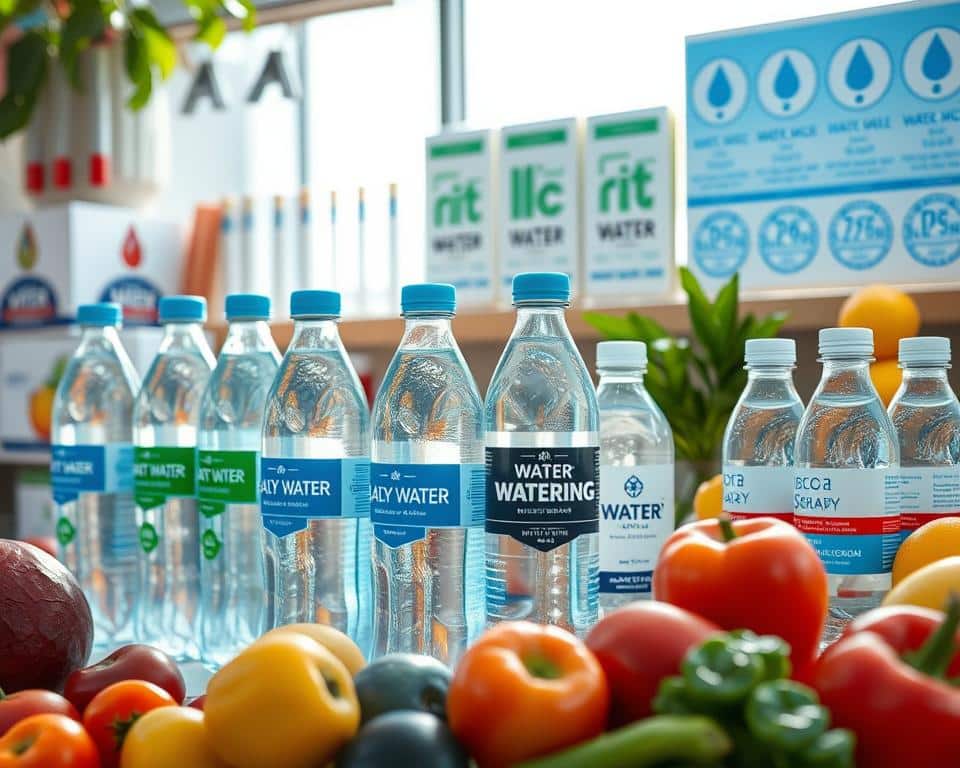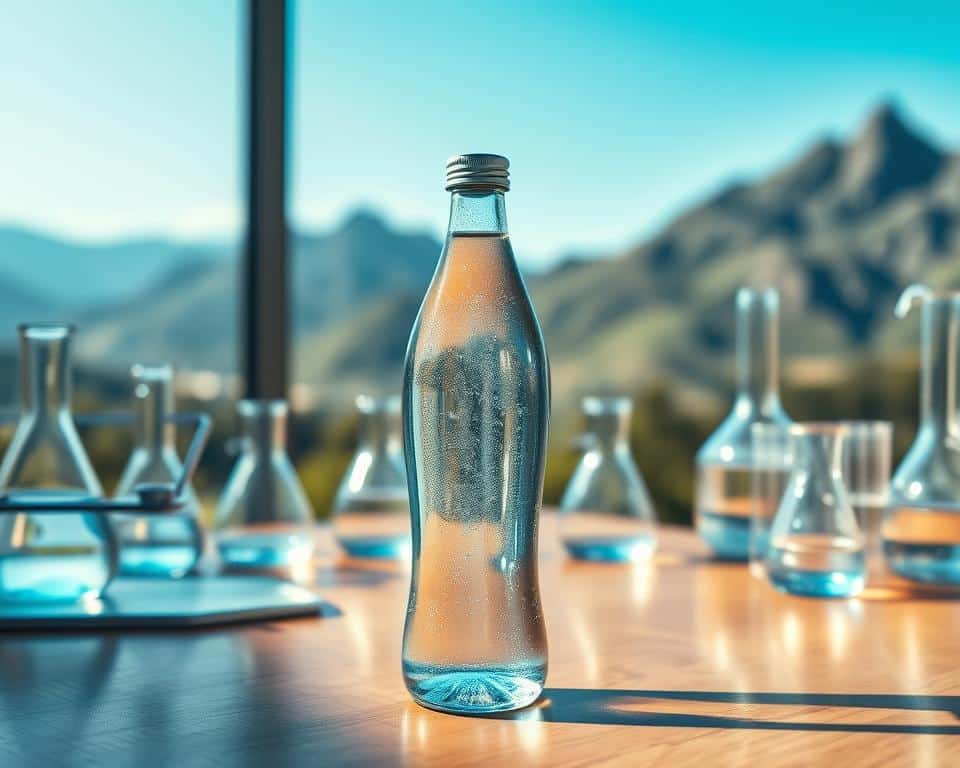In the United States, safe drinking water is very important, especially for bottled water. The FDA sets rules for bottled water to keep us safe from health risks. These rules make sure bottled water is as safe as tap water to avoid getting sick.
The FDA demands strict safety measures like thorough testing and proper storage. Bottled water labels tell us where the water comes from and how it’s treated, helping us choose wisely. Although it’s rare for people to get sick from bottled water, following these rules is crucial. For more info, visit the FDA’s consumer update on bottled water safety.
Knowing about these safety steps can protect us from health problems. It makes sure safe drinking water is available to all, especially those who might be more at risk. To learn more about water treatments, like purified versus distilled, check this resource.
Introduction to Bottled Water Safety
Bottled water safety covers measures and standards to protect us from contamination like microbes, chemicals, and physical harm. In the U.S., it makes up about 25% of beverage consumption. That’s why knowing how it’s kept safe is essential.
Overview
Multiple government agencies work hard to ensure bottled water is safe. They focus on reducing health risks by following strict rules and protocols. The Safe Drinking Water Act (SDWA) has played a big part in setting these standards over its 50-year history.
Creating bottled water takes more water than you might expect. About 1.32 liters of water are needed to make just 1 liter of bottled water. This fact shows the lengths we go to ensure safety and the critical role of regulatory oversight.
Key Regulatory Bodies
The EPA and the FDA are the main agencies keeping bottled water safe. The EPA looks after public water systems, which can be sources of bottled water. Meanwhile, the FDA focuses on the specific standards for bottled water.
These agencies work together to cover all bases, keeping consumers safe. Updating regulations, like changes to the SDWA, shows their dedication to high safety standards.
| Agency | Primary Responsibility |
|---|---|
| EPA | Ensures the safety of public water systems |
| FDA | Regulates bottled water safety standards |
FDA Regulations for Bottled Water
The FDA sets strict rules to make sure bottled water is safe. These cover everything from where the water comes from to how it’s tested and processed. They aim to be as good as, or better than, EPA rules for tap water.
Source Protection
Water source safety is a top priority for the FDA. Water bottle makers must keep their water clean from contaminants. They keep water sources away from pollution and follow state laws, which might add more rules.
Testing Requirements
Water bottle companies must test their water carefully, following FDA rules. They check for harmful things like E. coli and lead. The goal is for bottled water to be as safe as tap water. The FDA also checks on companies and follows up on any complaints or problems.

Processing and Storage Guidelines
After purifying water, keeping it safe is crucial. This means clean bottling processes and storage areas. States might have extra tests and rules on bottle labels. This helps ensure bottled water is high quality and safe, wherever it’s sold.
Common Contaminants in Bottled Water
Bottled water could have contaminants that worry those who drink it. Knowing about the various pollutants helps us keep water safe and clean.
Microbial Contaminants
Keeping bottled water safe from microbes is vital. Bacteria, viruses, and protozoa in water can make people sick, especially those who are more vulnerable. These germs come from the water source or when it’s not treated right. Different ways to purify water are improving. Still, the FDA and EPA need to watch over them carefully to keep our water safe.
Chemical Contaminants
Chemicals like arsenic, PFAS, and phthalates might be in bottled water. They can come from nature or how the bottles are made. Studies have found tiny plastic pieces in the water we drink. These chemicals could harm our health over time. It’s good news that there are plans to lessen PFAS in our drinking water. This will help make it safer for us.
Physical Contaminants
Physical bits like microplastics can get into bottled water during production. Research says a bottle of water might have up to 240,000 tiny plastic pieces. This can make the water less safe and lead to it being pulled from shelves. Spending money on better water systems and filters could fix this problem. This would make bottled water safer for all of us.
| Contaminant Type | Sources | Health Risks |
|---|---|---|
| Microbial Contaminants | Water sources, inadequate treatment | Various illnesses, acute to severe |
| Chemical Contaminants | Natural deposits, industrial activities | Long-term health risks, such as cancer |
| Physical Contaminants | Production process, plastic packaging | Health concerns, environmental impact |
Knowing about the risks of bottled water lets people choose wisely and push for better safety. Strong rules and new ways to clean water are key. They make sure bottled water is a safe choice for us all.
Consumer Tips for Ensuring Safety
Choosing bottled water wisely is important for your safety and health. Learning about water labels is a big help. Look for marks like NSF, IBWA, and EPA on bottles, as they show the water meets high standards.
Keep your bottled water away from heat and sunlight. This keeps its taste and quality good. Don’t freeze or refrigerate it, as this might make plastic leak into the water. That can change the taste and might not be safe.
Reading the label closely is key to knowing if your water is pure. Find out where the water came from, how it was cleaned, and when it was bottled. Companies like Ceeke use special cleaning methods and safe bottles to keep water clean and healthy.

Do some homework on the water’s quality before you buy. Look for reports on how clean the water is and if there have been any problems before. This way, you can choose the safest bottled water.
Use resources from the CDC and FDA to learn more about water safety. Keeping up with the latest advice and rules helps you stay safe.
It’s smart for businesses to listen to what customers and employees say about their water. This feedback can help keep water quality high. It also builds trust with customers.
Learning more about water labels can help you choose better. A good place to start is this guide. It explains the difference between purified and distilled water, helping you make informed choices.
Learning About Bottled Water Labels
Understanding bottled water means knowing about different water sources and treatments. Labels help us learn about the quality and where the water comes from. By looking closely at labels, we can choose wisely.
Understanding Water Sources
Bottled water labels clearly show where the water is from. It could be municipal, from a natural spring, or a well. Each source has its own special qualities. For example, knowing the differences between artesian, mineral, and spring water affects our choices. Mineral water needs at least 250 milligrams per liter of total dissolved solids (TDS). And the label will tell you if it has low or high mineral content.
Treatment Methods
Labels also talk about how the water is treated. Common ways include distillation, deionization, reverse osmosis, and sterilization. Knowing how water is purified, like through reverse osmosis or distillation, helps us understand what we’re drinking.
Quality Information and Where to Find It
The FDA requires bottled water to include quality data. Labels should have details about any contaminants and extra treatments for safety. Look for the International Bottled Water Association’s (IBWA) Model Code certification for high standards. For more details, companies often share water quality reports online, adding to the transparency of labels.
Labels on bottled water provide key information about its source, how it’s treated, and its quality. This helps us make smart and healthy choices when buying water.
Conclusion
Reviewing the safety standards for bottled water shows that many steps ensure our safety. The FDA and EPA work together to keep water safe from things like germs. It’s important because some studies have found stuff like microplastics in our bottled water.
A study from Rutgers and Columbia University discovered bottled water has about 240,000 tiny plastic pieces per liter.
It’s important for us to pay attention to water safety. Checking the labels on bottled water helps us know more about where it comes from and how it’s cleaned. Learning from trusted sources can also help us make better choices. For more info, check out this informative page.
We can make water safer by reporting sickness linked to bottled water and using less plastic. Making plastic bottles adds a lot to carbon emissions. By choosing wisely and being aware of our environment, we all help make our planet and water safer.

